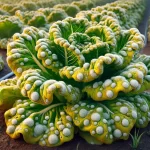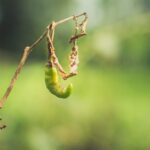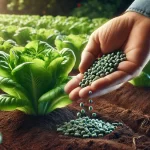Fungal diseases pose a constant threat to lettuce cultivation, affecting its quality and yield. Preventing and managing these issues is essential to maintaining healthy plants and abundant harvests. In this article, we will address prevention, identification, and control strategies for fungal diseases in lettuce, providing technical, nutritional, and practical advice for producers and specialists.
Importance of Preventing Fungal Diseases
Fungal diseases can spread rapidly under favorable conditions, reducing lettuce vitality and causing significant losses. Adopting a proactive approach based on prevention, constant monitoring, and proper nutrition strengthens plants and limits the incidence of infections.
Main Fungal Diseases in Lettuce
1. Downy Mildew (Bremia lactucae)
- Symptoms: Grayish powder on the underside of leaves, followed by yellowing and premature leaf drop.
- Conditions: High humidity and moderate temperatures favor its development.
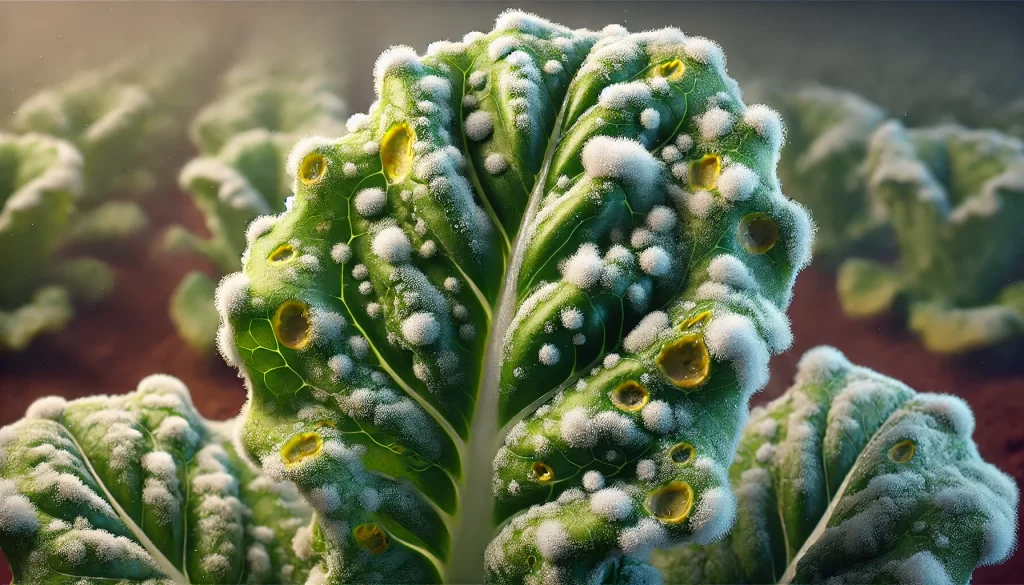
2. Root Rot (Pythium spp.)
- Symptoms: Sudden wilting, soft and necrotic roots, general plant weakening.
- Conditions: Poorly drained soils and excessive moisture.

3. Angular Leaf Spot (Pseudomonas cichorii, though bacterial, often associated with fungal conditions)
- Symptoms: Yellow spots with purple edges on leaves, often accompanied by mold.
- Conditions: High humidity and weakened plants.
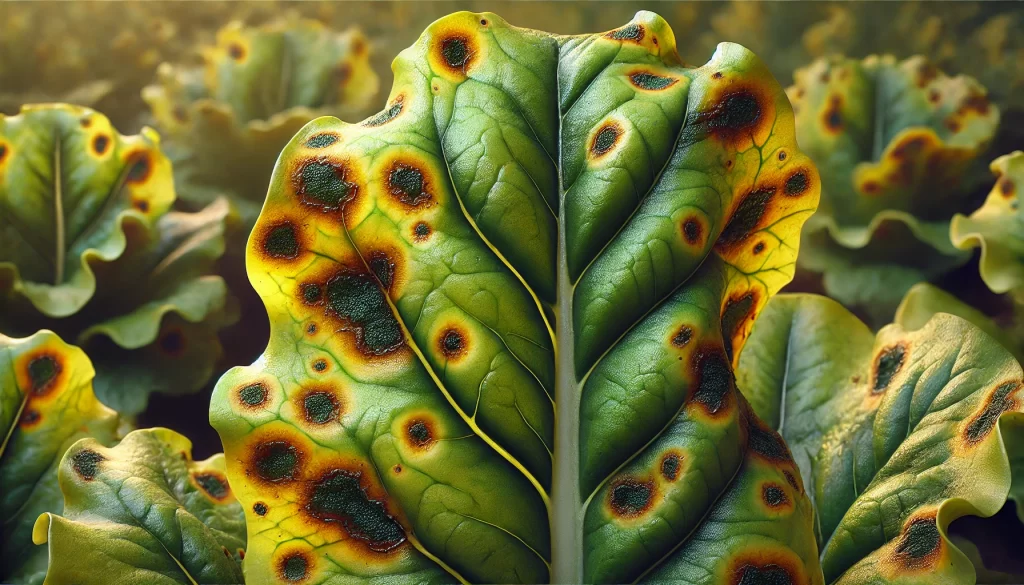
Table of Diseases and Control Strategies
| Disease | Main Symptoms | Prevention and Control Strategies |
|---|---|---|
| Downy Mildew | Gray powder on leaves, yellowing, leaf drop | Apply fungicides, improve ventilation, avoid excess humidity |
| Root Rot | Wilting, soft and dark roots | Improve drainage, avoid overwatering, use specific fungicides |
| Angular Leaf Spot | Yellow spots on leaves, mold | Remove infected material, apply preventive fungicides, reduce humidity |
Prevention Strategies
Environmental and Cultivation Management
- Ventilation: Ensure good air circulation around plants to reduce humidity.
- Proper Irrigation: Use drip irrigation to minimize water contact with leaves and avoid nighttime watering.
- Crop Rotation: Alternate lettuce with non-susceptible crops to reduce pathogen buildup in the soil.
Plant Material and Hygiene
- Healthy Seeds and Seedlings: Use certified, disease-free plant material.
- Cleaning and Disinfection: Disinfect tools and remove infected crop debris to prevent spore spread.
Fungal Disease Control
Fungicide Application
- Preventive and Curative: Apply specific fungicides following technical recommendations, especially at the first sign of infection.
- Product Rotation: Rotate fungicides to prevent pathogen resistance.
Cultural and Biological Practices
- Removal of Infected Plants: Immediately remove affected plants to prevent spreading.
- Biocontrol Agents: Introduce beneficial microorganisms such as Trichoderma spp. that compete with pathogenic fungi.
Nutritional Tips for Strengthening Lettuce
Well-nourished lettuce is less susceptible to diseases. To strengthen plants:
- Nutritional Balance: Maintain soil with optimal levels of N, P, K, and micronutrients. Vigorous crops are more resistant to infections.
- Proper Fertilization: Use balanced fertilization and fertigation to sustain plant health.
- Organic Amendments: Compost and other amendments improve soil structure and promote beneficial microflora that help prevent diseases.
Conclusion
Preventing and managing fungal diseases in lettuce requires an integrated approach that combines cultural practices, chemical applications, and proper nutrition. Proactive management through environmental control, proper irrigation, crop rotation, and selective fungicide use, along with a good fertilization plan, strengthens plants and reduces disease incidence. With technical knowledge and constant attention, producers can maintain healthy and productive lettuce crops.
References
- Bliss, F.A. (2000). Vegetable Crop Production. CABI Publishing.
- Kogan, M. (1998). “Integrated Pest Management: Historical Perspectives and Contemporary Developments.” Annual Review of Entomology, 43, 243-270.
- Agrios, G.N. (2005). Plant Pathology. Elsevier Academic Press.
 AgronoBlog – Agriculture Blog
AgronoBlog – Agriculture Blog 